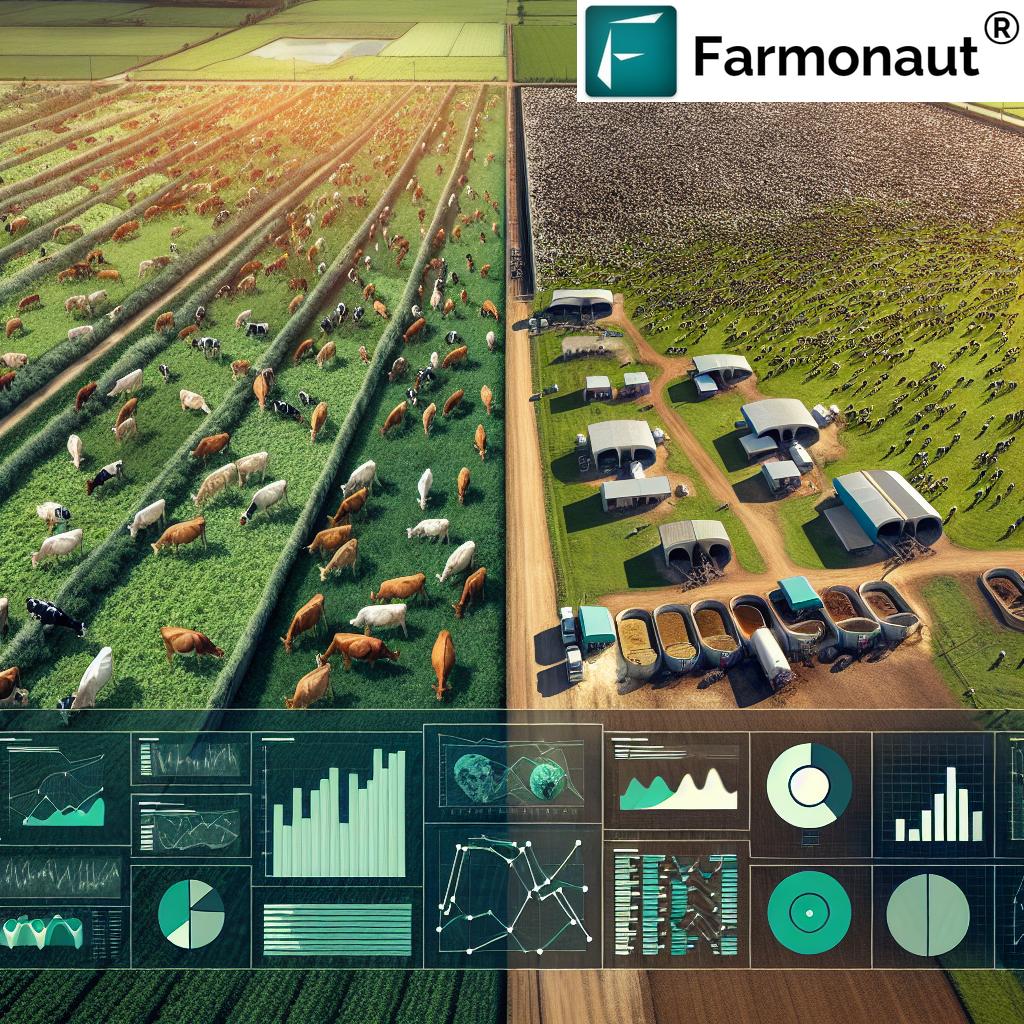Automated Sawmill: Boosting Wood Processing & Sustainability in 2025
“Automated sawmills can increase timber processing efficiency by up to 50% compared to traditional manual methods.”
Introduction: The Revolution of Automated Sawmills
The advent of the automated sawmill marks a significant step forward for the forestry and timber industries in 2025 and beyond. By marrying advanced robotics, artificial intelligence (AI), machine learning, and sensor technologies, sawmills worldwide are transforming from labor-intensive operations into smart, data-driven systems.
This transformation is not just about increasing efficiency and cutting operational costs—it’s about aligning with the growing emphasis on sustainability, minimizing waste, and guaranteeing safety for workers.
In this in-depth guide, we’ll explore how these technological innovations are revolutionizing the industry, supporting sustainable practices, and optimizing wood processing to enable businesses to meet rising global demand for high-quality, responsibly sourced lumber.
Before delving into technical details, consider that an automated sawmill can now precisely analyze every log in real-time, maximizing yield and quality while reducing wastage—a leap over what’s possible through manual judgment and experience. Let’s see how these systems have evolved to set a new standard for productivity and sustainability in wood processing.
The Evolution from Traditional to Automated Sawmills
For centuries, sawmills have played a pivotal role in converting forest resources into usable timber for construction, furniture, and paper industries. Traditional sawmills relied heavily on human labor, intricate manual tasks, and experience-based judgment—resulting in variable wood quality, higher wastage, and increased safety hazards.
- Manual operations meant workers personally handled logs, undertook cutting and sawing, and performed sorting and grading.
- This hands-on approach led to inconsistencies due to subjective judgment and physical limitations.
- As demand for timber rose globally, inefficiencies in production and escalating environmental impacts became untenable.
Now, the automated sawmill of 2025 leverages a suite of sophisticated machinery and smart systems, dramatically boosting both productivity and sustainability.
“Advanced sawmill automation reduces wood waste by nearly 30%, supporting more sustainable forestry practices.”
Core Technologies Driving Automated Sawmill Success
What distinguishes the modern automated sawmill from its traditional predecessors is the integration of multiple advanced technologies. Here’s a closer look at the core components that power today’s automated sawmills:
- AI & Robotics: Artificial intelligence and robotics oversee cutting, sorting, debarking, and grading operations, adapting in real-time based on data.
- High-Resolution Scanners & 3D Imaging: Scanners and 3D imaging technology analyze every log, assessing parameters like knot location, grain pattern, and moisture content.
- Sensor Technologies: Sensors detect log dimensions, moisture levels, and defects with high precision.
- Machine Learning Algorithms: These systems continuously learn from historical data, adjusting cutting strategies and maximizing yield.
- Industrial IoT (Internet of Things): Enables real-time monitoring, remote control, and data transfer across the supply chain.
Together, these technologies transform wood processing operations into highly efficient, safe, and environmentally responsible practices. Automated sawmills in 2025 are set to become the backbone of a more sustainable timber industry.
How Automated Sawmills Optimize Wood Processing
Let’s examine how a state-of-the-art automated sawmill operates on a typical day:
- Log Intake and Debarking: Sophisticated machinery receives and automatically debarks logs, readying them for cutting.
- Scanning and Analysis: High-resolution scanners and 3D imagers analyze each log in real-time, pinpointing knot locations, grain orientation, and moisture conditions.
- Determining Optimal Cutting Pattern: AI software determines the optimal pattern and angle to maximize yield and minimize waste, using algorithms trained on historical data for wood species and customer requirements.
- Robotic Sawing: Automated systems precisely cut according to the optimal pattern at speeds unattainable through manual intervention.
- Sorting and Grading: Finished lumber is sorted and graded by robotics and image analysis, ensuring consistent quality and removing substandard wood.
- Data Collection and Feedback: Every phase is logged by integrated sensors, feeding operational data into enterprise resource planning (ERP) and supply chain systems.
With such automation, sawmills can operate continuously, respond instantly to market demand changes, and ensure every wood log delivers its highest possible value.
Example Workflow: AI and Imaging in Lumber Optimization
- Input: A log is placed onto a conveyor.
- Scanning: 3D imaging captures its exact shape and detects potential internal flaws.
- AI Assessment: Artificial intelligence considers factors like moisture content and grain pattern to decide cut locations that maximize lumber quality and minimize offcuts.
- Precision Robots: Automated saws and sorters execute cuts and direct processed timber to grading or finishing areas with little human intervention.
This tight integration of hardware and software pushes wood processing into a new era—one aligned with modern industry practices and global sustainability trends.
For operations outside the mill, we at Farmonaut provide satellite-based monitoring and AI-driven insights to optimize resources in agriculture, forestry, and related industries. Whether it’s monitoring forests for sustainable harvesting or supporting crop plantation and advisory, our web and mobile apps empower users worldwide. Try our  for advanced resource management.
for advanced resource management.
Key Benefits: Productivity, Waste Reduction, and Safety in Automated Sawmills
Adopting an automated sawmill unlocks a range of impactful benefits for businesses in the forestry and timber industries:
1. Dramatic Enhancement in Productivity and Throughput
- Operate at Higher Speeds: Automated sawmills maintain consistent, high-precision performance, allowing round-the-clock production and enabling businesses to meet rising demand.
- Continuous Operation: Unlike manual systems, automated mills can run with minimal interruptions, supporting large-scale furniture manufacturing, construction, and paper industries.
2. Waste Minimization and Maximum Resource Utilization
- Precision Cutting: AI-driven optimization ensures each log is cut to maximize usable wood and minimize offcuts, reducing waste by up to 30% compared to manual practices.
- Reduced Environmental Impact: By minimizing waste, fewer trees are needed to produce the same volume of lumber, directly supporting responsible forest management.
3. Improved Worker Safety
- Minimized Human Interaction: Automation significantly lowers direct human involvement with moving machinery and sharp cutting blades, reducing workplace hazards.
- Remote Control and Monitoring: Supervisors can oversee operations from secure control rooms, utilizing real-time data and surveillance to intervene only when necessary.
4. Consistency and Flexibility in Production
- Machine Learning Adapts to Changes: Sawmills utilizing machine learning algorithms can swiftly adapt cutting strategies based on species, customer requirements, or new market trends.
- Repeatable Quality: Automated processes remove variability, delivering lumber that consistently meets exact specifications for international construction standards.
5. Enhanced Data Collection, Analytics, and Reporting
- Resource Management: Automated mills generate vast amounts of operational data, enabling forestry businesses to analyze trends and optimize efficiency further.
- Traceability: This data-driven approach extends from timber harvest to end-product delivery, enabling robust supply chain integration—a necessity for industries focusing on sustainability and responsible sourcing.
For broader operations encompassing fleets and equipment, our Fleet Management tools at Farmonaut optimize logistics, reduce costs, and improve safety by tracking vehicles and asset movement via satellite intelligence. This is an ideal upgrade for forestry and timber logistics in 2025.
Sustainability: Automated Sawmills and Responsible Forestry
Modern automated sawmills are at the forefront of environmental sustainability, actively contributing to responsible resource management and climate goals:
- Efficient Resource Usage: Maximizing timber yield from every log means fewer trees are felled for the same output, conserving valuable forest resources.
- Lower Carbon Footprint: Energy-efficient motors and integration of renewables (like solar power) directly support decarbonization targets in forestry operations.
- Reduced Waste Streams: By leveraging advanced technologies that minimize wastage, automated sawmills decrease landfill contributions.
- Sustainable Certifications: Enhanced traceability and reporting make it easier to comply with international standards such as FSC and PEFC certifications.
- Environmental Impact Tracking: We at Farmonaut offer Carbon Footprinting and real-time impact monitoring solutions for forestry and timber industries, helping businesses measure and reduce their emissions and resource use in line with sustainability objectives for 2025 and beyond.
Spotlight: Blockchain-Based Traceability
Another forward-looking innovation is blockchain-based traceability. Our Traceability Solution at Farmonaut enables companies to verify timber origin, maintain supply chain integrity, and demonstrate ethical sourcing to regulators and consumers—vital for automated sawmill operations requiring rigorous compliance in 2025.
Supply Chain Integration and Digital Traceability
The automated approach extends beyond the sawmill floor. Embedded sensors and industrial IoT connectivity facilitate seamless integration between mills, logistics providers, and end-users:
- Real-Time Data Sharing: Operations, output, and resource data flow instantaneously across the value chain, ensuring accuracy and efficiency.
- Full-Chain Traceability: Blockchain technology assures that every piece of lumber is tracked from forest to final delivery, aiding compliance and transparency.
- API Access for Custom Integrations: For businesses seeking to build or enhance their operations, we at Farmonaut offer satellite monitoring APIs. Explore our Developer Docs to enable seamless data integration into your operational platforms.
Meeting Certification Demands
Supply chain transparency has become essential for meeting both governmental and consumer demands. Automated sawmills are uniquely positioned to fulfill these requirements by supplying digital records confirming legal harvesting, responsible sourcing, and sustainable practices through international certifications and digital ledgers.
Global Timber Demand and Standardized Quality Enabled by Automation
As countries ramp up infrastructure and construction projects, the demand for high-quality, sustainable timber increases. Automated sawmills enable producers to supply standardized, specification-driven lumber for everything from residential housing frames to commercial bridges.
- Reliable Output: Automation guarantees consistent quality and dimensions, critical for strict structural applications.
- Flexible Production: Machine learning enables rapid adaptation to evolving customer requirements and wood species, keeping producers competitive in a globalized market.
- Eco-Friendly Solutions: By enabling increased use of timber over environmentally taxing materials like steel and concrete, sawmills play a crucial role in promoting sustainable construction worldwide.
For large-scale forestry management, our Large Scale Farm Management tools at Farmonaut provide satellite-based oversight for plantation, yield prediction, and resource allocation—ensuring ongoing sustainability and operational efficiency throughout the value chain.
Comparative Table: Traditional vs Automated Sawmills
| Metric | Traditional Sawmill (Estimated Value) | Automated Sawmill (Estimated Value) |
|---|---|---|
| Processing Speed (cubic meters/hour) | 8–16 | 20–32 |
| Labor Requirement (number of workers) | 28–45 | 8–14 |
| Wood Yield Efficiency (%) | 60–70 | 84–90 |
| Energy Consumption (kWh/ton) | 90–130 | 62–88 |
| Waste Produced (% of raw material) | 22–28 | 10–16 |
| Timber Quality (Quality Index score) | 68–75 | 88–95 |
| Carbon Footprint (kg CO₂/ton) | 310–400 | 178–240 |
Source: Estimated industry averages for 2025. Metrics may vary by geography, species, and technology level.
Challenges and The Future of Automated Sawmills
While the shift to automation offers undeniable benefits, several challenges remain:
- High Initial Capital Investment: Automated sawmills require significant upfront costs for machinery, systems, and infrastructure.
- Need for Skilled Personnel: Operators must possess technical skills for maintenance, troubleshooting, and optimizing AI-driven systems.
- Data Security and Integration: As more systems and supply chains become digitized, the need for robust cybersecurity and data integration protocols increases.
Looking Ahead to 2025 and Beyond
The trajectory is clear: As automation costs decrease and advanced technology becomes more accessible, even small and medium-sized forestry enterprises will adopt automated solutions. Innovations such as blockchain traceability, remote AI-driven monitoring, and robust resource management platforms—like those we offer at Farmonaut—are set to further catalyze this transformation.
Alongside these advancements, comprehensive environmental impact monitoring and resource management solutions will support industries in striking the right balance between productivity and sustainability.
Farmonaut: Advanced Technology for Sustainable Resource Management
We at Farmonaut are committed to enabling sustainable, data-driven operations across forestry, agriculture, and allied sectors. Through our satellite-based insights, AI advisory systems, and blockchain-enabled traceability, we empower users to make smarter, more sustainable decisions in their businesses and governmental operations.
- Satellite-Based Monitoring: Real-time assessment of forests, plantations, and timber-yielding tracts for better resource allocation and compliance.
- AI & Machine Learning: The Jeevn AI Advisory System delivers weather forecasts, customized operational strategies, and efficiency optimization.
- Blockchain Traceability: Secure, end-to-end tracking for timber and other resource flows, supporting certification, audits, and consumer confidence in the authenticity and sustainability of products.
- Vehicle and Fleet Management: Integrated tools to minimize operational costs and maximize machinery utilization, keeping timber supply chains running efficiently.
- Environmental Impact Tracking: Carbon footprint and emissions monitoring enable organizations to align with stringent global regulations and corporate responsibility initiatives.
Explore our suite of solutions for forest crop plantation and advisory management, accessible via mobile, web, and API integration—perfect for forestry and timber sector needs in 2025.
Frequently Asked Questions: Automated Sawmills
What is an automated sawmill?
An automated sawmill is a facility that uses advanced robotics, artificial intelligence, scanners, sensors, and data-driven systems to perform log processing tasks such as debarking, sawing, cutting, sorting, and grading with minimal human intervention, maximizing yield, efficiency, and sustainability.
How does automation improve wood processing efficiency?
Automation introduces real-time analysis, precision cutting, and machine learning to optimize every stage of the lumber production process. This reduces wastage, increases throughput, and ensures standardized quality—often doubling processing efficiency compared to traditional sawmills.
Do automated sawmills really promote sustainability?
Yes. Automated sawmills minimize timber waste, reduce the number of trees needed for production, lower energy consumption, and simplify environmental impact reporting. They also enable traceable, responsibly sourced wood products, making it easier to comply with international sustainability standards.
What are the biggest challenges in adopting automated sawmills?
Key challenges include high initial capital costs for setting up automated systems, the need for technically skilled operators, and the complexity of integrating multiple digital systems in supply chains. However, as technology matures, these barriers are decreasing.
How does Farmonaut support forestry and timber industries?
We provide satellite monitoring, AI-based decision support, blockchain-enabled traceability, environmental impact tracking, and fleet/resource management tools—all designed to improve operational efficiency, transparency, and environmental sustainability in the forestry sector.
Can smaller businesses benefit from automated sawmills?
Absolutely. As automation technology becomes more cost-effective and accessible, tailored solutions are emerging for small and medium enterprises, enabling them to compete in a dynamic and sustainability-focused timber market.
Conclusion: The Way Forward with Automation in Forestry
The automated sawmill industry stands as a beacon for efficiency, sustainability, and resource conservation in 2025 and beyond. By integrating advanced robotics, artificial intelligence, sensors, and data-driven systems, these facilities offer measurable benefits across productivity, waste reduction, worker safety, and environmental responsibility.
Our mission at Farmonaut is to enable these advancements for forestry and allied sectors by delivering cost-effective, scalable, and transparent technology solutions. As the world moves toward smarter, greener, and more sustainable forestry practices, the role of automation in lumber processing will only continue to grow—ensuring both industry success and the responsible stewardship of our planet’s forests for generations to come.










